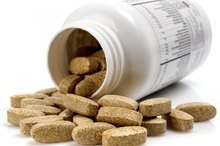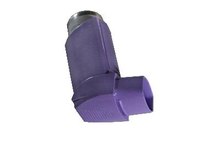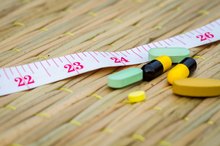What does fact checked mean?
At Healthfully, we strive to deliver objective content that is accurate and up-to-date. Our team periodically reviews articles in order to ensure content quality. The sources cited below consist of evidence from peer-reviewed journals, prominent medical organizations, academic associations, and government data.
- MedlinePlus: Food Additives
- MedlinePlus: Allergies
- MedlinePlus: Sodium – Blood
- MayoClinic.com: Food Allergy vs. Food Intolerance – What’s the difference?
The information contained on this site is for informational purposes only, and should not be used as a substitute for the advice of a professional health care provider. Please check with the appropriate physician regarding health questions and concerns. Although we strive to deliver accurate and up-to-date information, no guarantee to that effect is made.
Side Effects of Sodium Stearoyl
Sodium stearoyl or better known as sodium stearoyl lactylate or SSL is a food additive incorporated into processed food products. According to Medline Plus, a website supported by the National Institutes of Health, food additives help maintain product consistency, improve and preserve nutritional value and maintain the wholesomeness of food items 1. Food additives also help control the food’s acidity and alkalinity as well as provide color and enhance flavor 1. SSL is commonly used in commercial baked goods such as breads, cookies and crackers. Using sodium stearoyl has several side effects.
Allergies
Most food additives including sodium stearoyl lactylate are considered safe by the United States Food and Drug Administration 1. These substances are put on the generally recognized as safe or GRAS list which is evaluated on an ongoing basis. Still, although not very common, some patients may have allergies and food intolerance to SSL or any of its composition. A person who is allergic to sodium stearoyl lactylate has an immune response that’s oversensitive. This oversensitivity causes itching, swelling, mucus production, muscle spasms, hives and rash formation once the allergen is ingested or comes in contact with the person.cause:
- This oversensitivity causes itching
- swelling
- mucus production
- muscle spasms
- hives
- rash formation once the allergen is ingested or comes in contact with the person
The best way to prevent allergies is to avoid the allergen. In cases where allergic reactions are severe, emergency interventions are done to prevent death and mortality.
- Most food additives including sodium stearoyl lactylate are considered safe by the United States Food and Drug Administration 1.
- Still, although not very common, some patients may have allergies and food intolerance to SSL or any of its composition.
Food Tolerance
What Is Low TSH?
Learn More
One of the possible side effects of sodium stearoyl lactylate is food intolerance. Food intolerance has similar manifestations to food allergies, but it does not involve the immune system. With food intolerance, ingestion of the food item in small amounts is possible but it large quantities, it can already cause:
- symptoms like nausea
- vomiting
- stomach cramping
- diarrhea
Food intolerance to sodium stearoyl lactylate is caused by abnormal digestive reactions to the food additive. It is important to distinguish food intolerance from true allergies; by doing this, proper management can be done.
- One of the possible side effects of sodium stearoyl lactylate is food intolerance.
- It is important to distinguish food intolerance from true allergies; by doing this, proper management can be done.
Sodium Imbalance
Using excessive amounts of sodium stearoyl lactylate can potentially lead to abnormal sodium levels. According to MedlinePlus, normal sodium concentrations in the body range from 135 to 145 mEq/L 23. Abnormal sodium levels can be due to many factors such as dehydration, hormonal imbalance and excessive or deficient dietary sodium intake that comes from food, dietary supplements and food additives 1. Higher than normal sodium levels are called hypenatremia while lower than normal sodium levels are called hyponatremia.
Related Articles
References
- MedlinePlus: Food Additives
- MedlinePlus: Allergies
- MedlinePlus: Sodium – Blood
- MayoClinic.com: Food Allergy vs. Food Intolerance – What’s the difference?
- American Heart Association. Sources of Sodium.
- Centers for Disease Control and Prevention. Top 10 Sources of Sodium. 2017.
- Institute of Medicine. Dietary Reference Intakes Tables and Application. National Academies of Sciences, Engineering, and Medicine, Health and Medicine Division. 2015.
- United States Department of Agriculture. Dietary Guidelines for Americans 2015–2020. United States Department of Health and Human Services. 2015.
Writer Bio
Helen Nnama has six years of writing experience. She is a health contributor to TBR Journal, editor of fertility confidential manuals, published poet, and a greeting card writer. She has a B.S. in microbiology, an M.S. in epidemiology, and is an M.D. candidate. A former state HIV/AIDS epidemiologist and NIA fellow at Johns Hopkins, she has research experience with published work.








